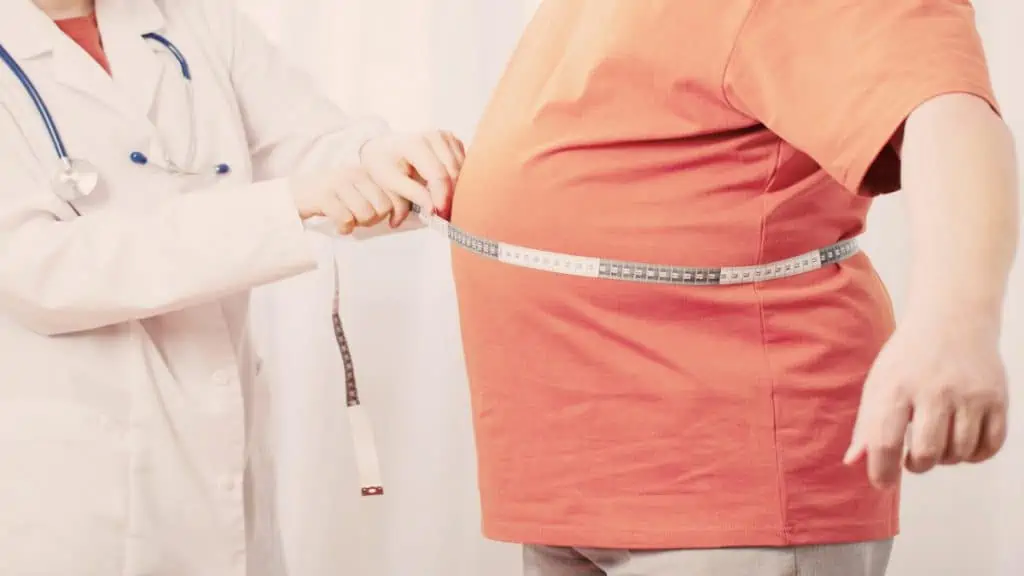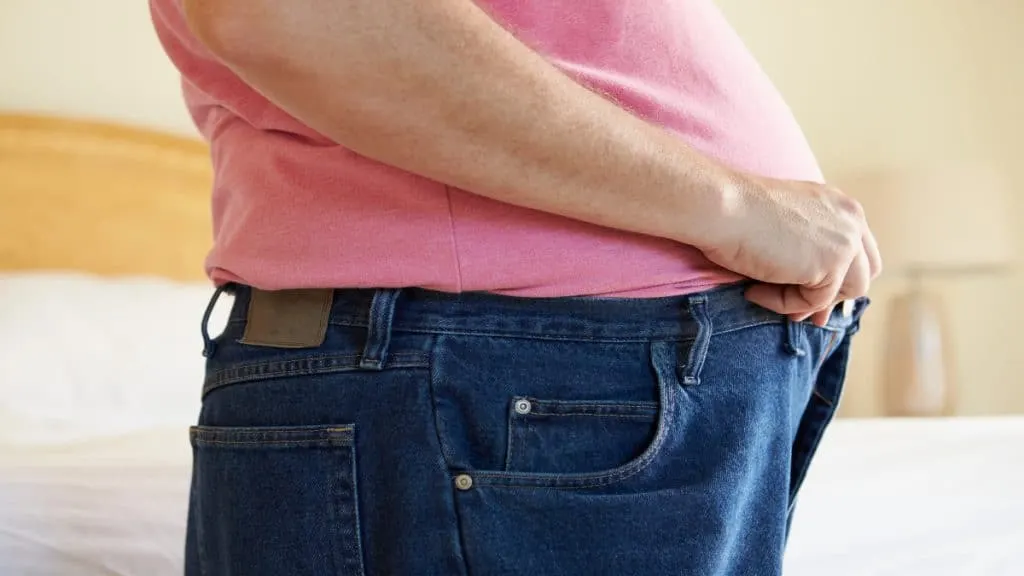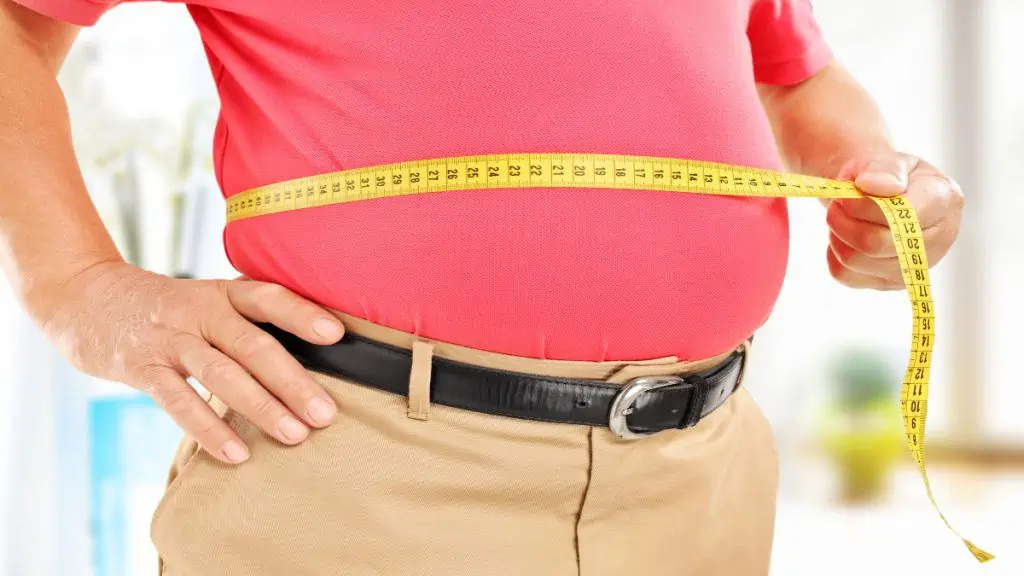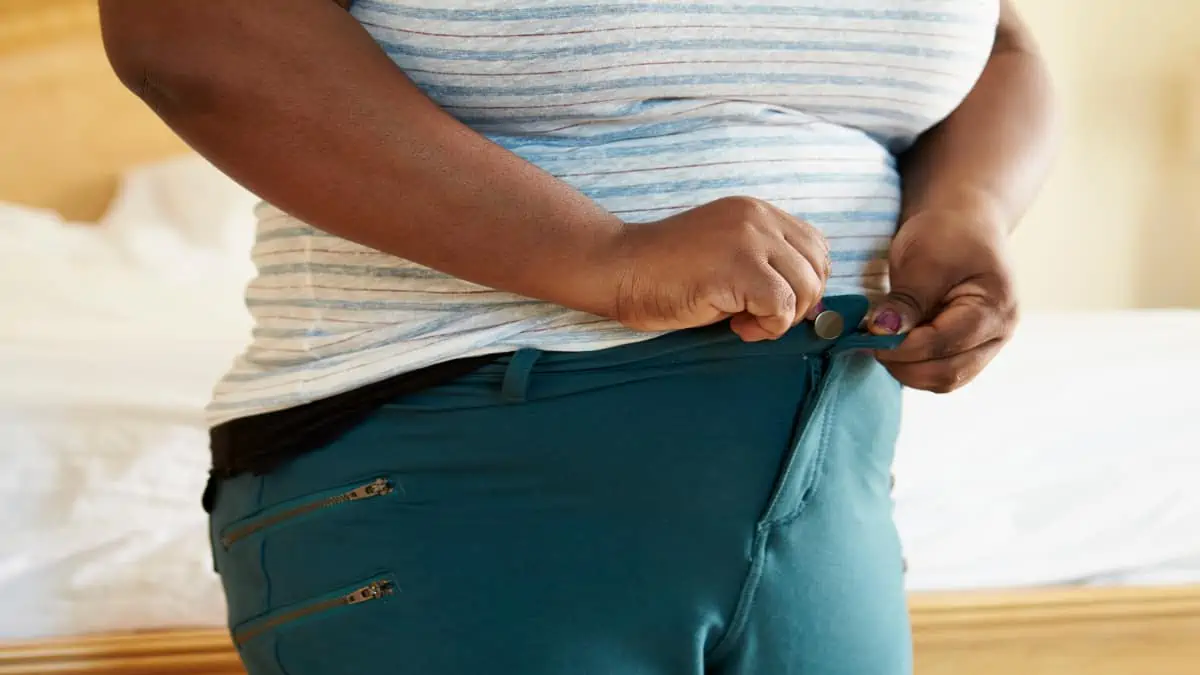Although there is no such thing as the perfect waist size in terms of aesthetics, it’s safe to say that having a 51 inch waist is too big for an individual to enjoy good health.
Just how big is a 51″ waist? A 51 in waist is more than 10 inches bigger than average for adult men and women, according to US anthropometric data.
What’s even more shocking is that the average measurements are already too big. Indeed, health practitioners and researchers commonly recommend that a man keep his waist below 37 inches (some recommend <35 inches) and that a woman keep her waistline below 35 inches (some recommend <31.5 inches).
So, at 51 inches, it’s possible that, based on the worst estimates, your waist is 20 inches larger than it should be if you’re a woman.
- 50 inch waistline
- 52 inch waistline
- 53 inch waistline
- 54 inch waistline
- 55 inch waistline
- 56 inch waistline
- 57 inch waistline
- 58 inch waistline
- 59 inch waistline
What’s wrong with having a 51 inch waist?

Having a 51 inch waist and an excessively large waistline, in general, can increase your risk of glucose intolerance and diabetes. [1] A large stomach can also lead to other chronic illnesses like heart disease and cancer because it increases the amount of visceral fat around your internal organs.
In terms of appearance, there’s no need to have a particular physique. Indeed, there are many skinny models and muscular bodybuilders who have body dysmorphia, so it just goes to show that having a positive attitude towards your body is really important for your mental health.
As for your physical health, however, you simply cannot live in your best health while having a 51″ waist.
Just in the short term, having a 51 inch waistline can make it hard to find clothes that fit you well. Worse still, carrying around excess weight can lead to joint pain, which can reduce your quality of life by making everyday tasks really uncomfortable.
Having a 51 inch belly is especially problematic for women, according to research, as it leads to an increased risk of cardiovascular disease. [2]
This is not to say that men shouldn’t be worried about having a 51 inch waist; rather, it’s to say that some research finds that women with larger waists are at a greater risk of chronic disease than men with large waists (perhaps because a higher proportion of a man’s waistline is likely to consist of lean mass).
What causes a person to have a 51 inch waist?

Some people say that obese individuals simply need to eat less and move more in order to slim their stomachs. [3] And while there’s definitely a lot of value in reducing your calories and increasing your activity levels—in fact, doing those two things is a must for weight loss—some people are genetically predisposed to storing more fat than others.
However, it’s you’re environment (which is to say your food intake and lifestyle) that actually awakens these genes and causes them to have an impact on your body.
For example, if you only had access to low-calorie food and were forced to walk for 5 hours every day, the chances of you having a 51 inch stomach would be close to zero.
On the other hand, if you live in the typical city, then you can have all kinds of processed food delivered to your door, which makes it really convenient to forget about cooking healthy and nutritious meals.
Admittedly, modern cities have plenty of fitness facilities, and you can certainly achieve a great fat-burning workout at home. However, since junk food is readily available, it can be hard to lead a healthy lifestyle in many cases (hard but definitely not impossible).
How can you slim your 51 inch waist naturally?

Let’s cut to the chase; if you want to lose weight, you need to be in an energy deficit. There are two ways to achieve this state.
One, you can reduce your calorie intake (a reduction of 500 calories per day should result in a weight loss of roughly one pound per week).
Two, you can increase your activity level by walking more and performing exercise (cardiovascular workouts and resistance training).
To burn lots of calories in a short space of time, you can combine resistance training with cardiovascular exercise. Specifically, performing your strength training drills in a superset, tri-set, or circuit fashion will shorten your workouts and place a greater demand on your cardiovascular system, which will boost your fitness and health.
So you could start with squats, move onto shoulder press, and then finish with arm curls. This is an example of a tri-set, and you could repeat it 3-4 times.
You can perform whatever exercises you like. Compound movements are great because they work multiple muscles and thus have a higher calorie burn than isolation exercises (though isolation exercises are often superior for targeting individual muscles that you really want to work on).
In conclusion

Having a 51 inch waist is far from ideal for living in good health. But the good news is that your transformation will be quite dramatic—and your health improvements significant—when you do shed your stomach fat.
In the meantime, focus on following a sustainable exercise regime and diet. You don’t want to lose a ton of weight by starving yourself and then regain it down the road, which could cause you to have a 51″ waist again in the future.
Instead, increase your activity level by walking more and doing 3 moderate to high-intensity workouts per week. You can always add extra sessions as your fitness levels increase.
On the diet side of things, get a good balance of proteins, fats, and carbs. Stick to whole food sources, as they’re rich in micronutrients and fiber, which promote health and weight loss, respectively.
References
- Guerrero-Romero, F., & Rodrı́guez-Morán, M. (2003). Abdominal volume index. an anthropometry-based index for estimation of obesity is strongly related to impaired glucose tolerance and type 2 diabetes mellitus. Archives of Medical Research, 34(5), 428–432. https://doi.org/10.1016/s0188-4409(03)00073-0
- Valdez, Rodolfo et al. “A new index of abdominal adiposity as an indicator of risk for cardiovascular disease. A cross-population study.” International journal of obesity and related metabolic disorders : journal of the International Association for the Study of Obesity 17 2 (1993): 77-82 .
- Asthana, A. (2021, March 23). Why do some people find it harder than others to lose weight? The Guardian. https://www.theguardian.com/news/audio/2021/jan/04/why-do-some-people-find-it-harder-than-others-to-lose-weight

